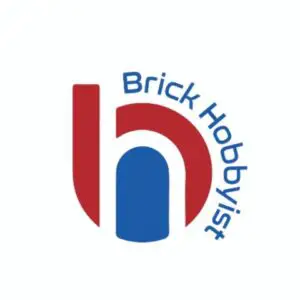
Table of Contents
Has The LEGO Group Always Used Plastic?
The LEGO brick has been a beloved toy of children and adults alike since it was invented more than 80 years ago. But have you ever wondered what the original LEGO bricks were made from? It may surprise you to learn that they weren’t always made of plastic, as is the case today.
No, the LEGO Group has not always used plastic. In fact, it wasn’t until 1949 that the LEGO Group began using plastic for its iconic building blocks. Before that time, the company had used wood as its primary material for constructing toys.
However, due to the rising popularity of plastic in production and the increased durability and flexibility of plastic materials, the LEGO Group decided to switch from wood to plastic components in order to meet customer needs. This transition helped cement LEGO’s place as one of the most popular toy brands in the world and is seen today as an example of successful innovation in product design and development.
What Were LEGO Toys Originally Made Of?
The history of LEGO bricks dates back to 1932 when the company was founded as a small woodworking shop in Denmark.
The first products were toys made from wood, including pigs, ducks and pull-toys. However, LEGO began experimenting with plastic molding technology from 1947 onwards, which eventually led to the production of their iconic interlocking brick system that is popular today.
The LEGO company’s early foray into plastic molding technology was with the invention of their Automatic Binding Bricks in 1949. This brick system used a plastic composite material that allowed for interlocking pieces that could be reused and rearranged multiple times. The bindings were made out of cellulose acetate, which is a form of thermoplastic derived from wood pulp.
In 1958, LEGO released its first plastic injection molded bricks which were made out of a new type of plastic called acrylonitrile butadiene styrene (ABS). ABS is a petroleum-based plastic that is highly durable and cheaper to produce than other plastics, making it an ideal material for the construction of toys.
This type of plastic is also rigid and non-toxic, making it safe for children to use. During this period, Lego bricks began to be mass-produced and the company soon became a leader in toy production across Europe.
Since then, LEGO has continued to innovate and expand its product range using different types of plastic. The company now manufactures several different kinds of ABS plastics, as well as other types such as polypropylene and polyethylene.
The LEGO Group also produces Eco-Bricks, which are made out of polyethylene (PE), a bio-based and biodegradable material obtained from corn starch or sugar cane.
Overall, the LEGO Group’s commitment to using high-quality, safe and sustainable materials is reflected in their production processes. LEGO has become an industry leader in creating eco-friendly plastic toys that are both durable and safe for children. The company’s dedication to innovation has allowed them to remain one of the most popular toy manufacturers in the world.
When Did LEGO Start Using Plastic?
The LEGO Group began using plastic to create its iconic building blocks in 1949, when the company’s founder, Ole Kirk Christiansen, started experimenting with different ways of producing their toys.
The move from wood to plastic allowed the LEGO Group to offer a more diverse and interchangeable range of products.
Which ultimately opened up a world of possibilities for children – and adults – around the globe.
This shift in production materials also heralded an exciting new chapter for the company and played an instrumental role in establishing the LEGO Group as one of the most recognizable toy brands in the world.
Using ABS (Acrylonitrile Butadiene Styrene) plastic enabled the toy company to create colorful, highly durable bricks with interlocking properties that didn’t fall apart easily.
In addition to this, ABS is also very versatile and can be molded into almost any shape or form imaginable.
These unique characteristics made it the ideal material for the LEGO Groups’ signature pieces that even 70 years later remain popular amongst children of all ages.
Today, the LEGO Group continues to build on its legacy by creating new materials such as plant-based plastics which are designed to be more sustainable than traditional forms of plastic. As a result, the company remains at the forefront of innovation within the toy industry while still being able to provide brick enthusiasts with timeless fun year after year.
Did The LEGO Group Change Their Plastic?
Yes, in the early 1960s, the company switched from a cellulose acetate-based plastic to a new material called acrylonitrile butadiene styrene (ABS). ABS is stronger and more durable than its predecessor, making it perfect for use in LEGO products.
The LEGO Group recently underwent another major change in regard to its plastic composition.
The toy company announced that it would be transitioning from ABS plastic to a more sustainable plant-based polyethylene material.
This shift was part of the company’s larger sustainability initiative, which is aimed at reducing its global carbon footprint.
The transition from ABS plastic to polyethylene is said to reduce the company’s carbon dioxide emissions by up to 15%.
This new material is also free of oil and other traditional plastics, making it better for the environment.
As well as being significantly more eco-friendly than ABS plastic, the plant-based polyethylene material also has superior durability.
Allowing LEGO pieces to be used again and again without breaking apart or becoming weak over time.
In addition to changing the type of plastic used in its products, LEGO has also committed itself to increasing transparency and traceability in its supply chain.
To do this, they will create a system that shows customers exactly where their LEGO sets are coming from and how they were produced.
This will ensure that all materials used in the production meet certain quality and sustainability standards.
Overall, the LEGO Groups’ switch from ABS plastic to a more sustainable alternative shows a commitment to creating products responsibly, with an eye toward protecting both people and the planet alike.
With this move, the toy giant has set an example for other companies looking for ways to reduce their environmental impact while still producing high-quality goods.
Are LEGO Bricks Made From High-Quality Plastic?
Yes, LEGO bricks are made of high-quality plastic. The polyethylene raw material used to manufacture LEGO pieces is not just regular plastic but has been specifically developed to ensure that LEGO bricks are able to withstand the rigors of play and last for generations.
Polyethylene is a strong, durable plastic that is flexible enough to be manipulated into the exact shapes needed for each type of LEGO brick.
Additionally, polyethylene does not contain any PVC or other materials that could be harmful to children.
As a result, parents can feel secure in knowing that their children can safely play with LEGO toys without worrying about ingesting potentially hazardous chemicals.
Furthermore, since LEGO bricks are designed to fit together perfectly each time they are put together, this also adds to the quality of these plastic building blocks.
They won’t chip or break easily and will stay connected during even the most vigorous playtime activities.
This ensures that kids will always enjoy playing with LEGO sets and encourages greater use of their imagination when creating new projects.
When Did The LEGO Group Switch From Wood To Plastic?
LEGO, the popular Danish toy company, began producing wooden toys in 1932. However, in the late 1940s, the company made the decision to switch from using wood as the primary material for their toys to using plastic.
The transition from wood to plastic began in 1949 when the company introduced its first plastic product, plastic building bricks called Automatic Binding Bricks.
However, it wasn’t until 1958 that the company started to mass-produce plastic bricks when they patented their famous clutch system which enabled bricks to stick together. To read more about this patent, I wrote an article entitled “How do LEGO bricks stick together?” that goes into further detail.
The new plastic bricks had interlocking capabilities, which allowed them to be connected and disconnected easily, providing endless possibilities for building and creation.
Final Thoughts
The use of plastic in LEGO products is an integral part of the company’s history, and it has grown along with its success over the years. From its humble beginnings as a wood-based toy, LEGO bricks are now made out of a high-quality plastic material that has been customized to enable the production of detailed pieces.
This transition from wood to plastic has allowed for greater creativity and innovative designs, helping LEGO become an iconic toy brand worldwide.
Today, the company is committed to using safe and sustainable materials for its toys and has become an industry leader in creating eco-friendly plastic products. The LEGO Group’s commitment to innovation has allowed them to remain one of the most popular toy manufacturers in the world.
